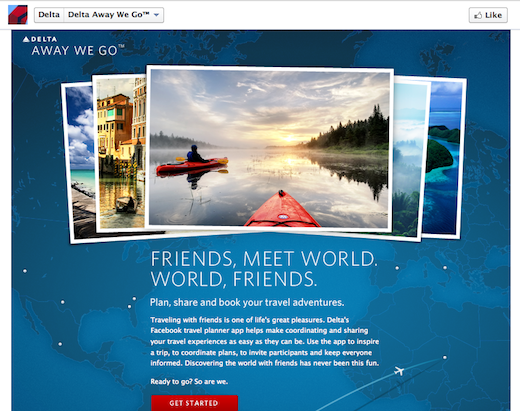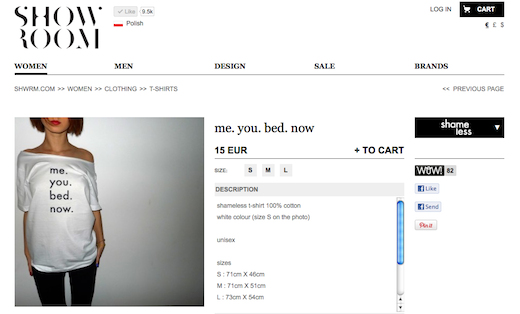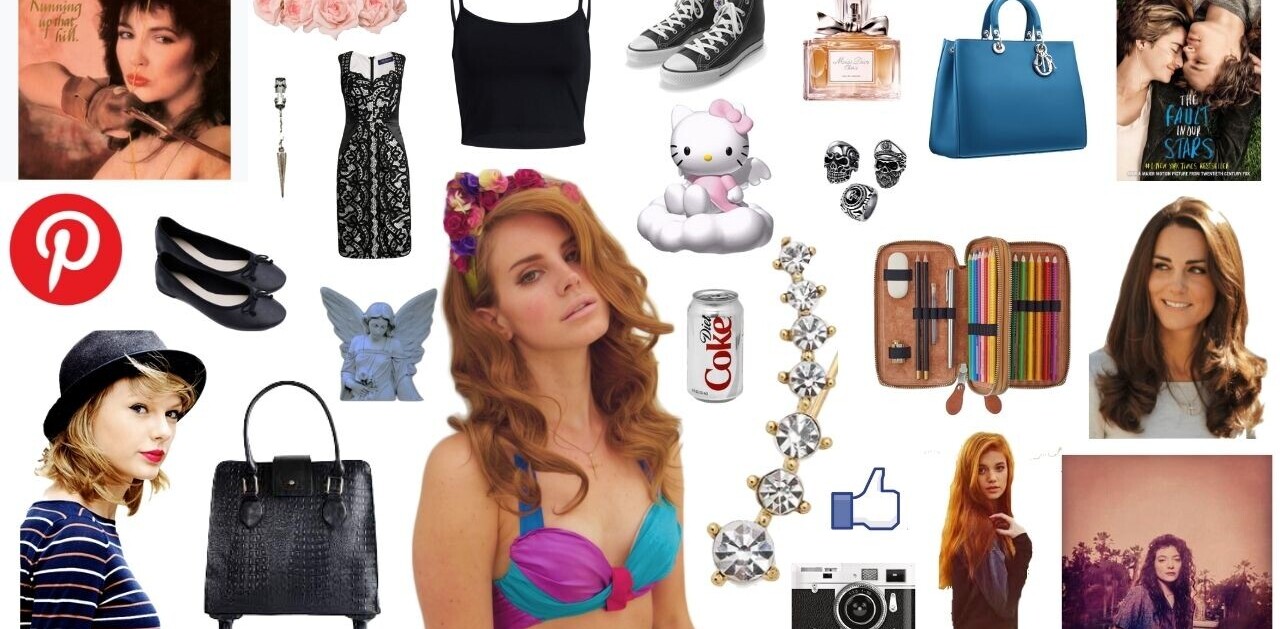
‘Social’ isn’t a new notion when it comes to commerce. Ever since people started bartering for goods, shopping was a social activity.
Technology changed this by introducing the impersonal e-shopping. With the use of social networks the social aspect of shopping is back maximizing a retailer’s reach and potential. Through social networks brands can interact with their customers and serve them on a personal level making e-commerce not just social but super!
Brand ID
Brand ID is the very first thing a brand must define very clearly. It is key to social. Not only is it vital so customers can identify with the brand, but it is also the answer for any major decision when it comes to social media. What platform should I be on? How should I respond to negative comments online?
Rihanna knows very well what her brand is. Recently MTV tweeted “Yikes. @Rihanna’s marijuana photos from Coachella spark controversy,” Rihanna was quick to respond: “@MTV Yikes… @rihanna ran out of f***s to give,” MTV replied “Well played” and deleted the original tweet.
The story quickly spread online manifesting mostly positive response to Rihanna’s reaction. Although I wouldn’t recommend telling a customer to fuck off, it is important to stay true to your brand ID at all times!

@MTV Yikes…. @rihanna ran out of fucks to give
— Rihanna (@rihanna) April 19, 2012
The right staff: Personal relationships play a key part in buying decisions, the making of loyal, returning customers and may even influence the amount of money a consumer spends on a brand.
One of the best examples I’ve heard of use social media for commerce, was by a friend in the luxury industry who told me that he went to a shop and they did not have a shirt available in his size, so the salesperson serving him asked him to give him his Twitter handle so he could tweet him a pic when new stock arrived and reserve the item via DM.
The question for retailers is how they can take that kind of isolated incidents and apply them on a bigger scale.
Hiring the right people is key. It takes a special kind of person to put his heart into serving other people, so when you find them, hire them and make it easy for them to connect and assist customers online and offline. How can you digitally empower your staff? Make it easy for your customers, not just to access a brand representative, but access the same representatives they’ve connected with in the past either online or offline, at all times.
Make sure your clients know who they are talking to, give your representatives their own social media ID, like Comcast . Train your brand representatives in using new tools, make it easy for them to guide a customer from an online point of sale to an offline and vice versa.
The right stuff: Your resources are limited and you can’t half-ass anything online. No point in creating a Facebook page if you don’t intend to reply to a single comment.
Don’t get carried away by trends, go back and ask what is my brand? Who is my customer? Figure out what you want to achieve via social media first. There is no point in buying a Ferrari if you intend to drive it like a Matiz. No matter how innovative a communication platform is, it is nothing but a tool, waiting to be utilized. Social media acts like a Swiss army knife of communication tools, but it won’t change your business if you use it solely as a loudspeaker to promote your products and offers. IBM revealed through a study, that the priorities customers have differed greatly from the priorities brand considered they had, so think before you act!
Shopping, ready, go!
Social commerce can’t be a pet project and it’s not a clever marketing campaign. Adding social elements on your e-shop and shopping elements to your presence on social media requires commitment and deep integration with all the other aspects or your business. What adds value is making the most of what social media makes visible to you: a web of relationships and social influence.
It’s not necessary to offer the same services on every point, but it is essential to engage with your customers with the same spirit to provide them with a holistic shopping experience.
Shopping with Friends

‘IRL’ shopping is often a fun leisure activity we do with friends but how can this experience be translated online? Delta doesn’t provide a social login on delta.com, but it does enable travelers to incorporate personal connections into their travel planning via the Delta Facebook travel planner app.
Levi’s provides recommendations from your online social circle through the Friends Store with the use of Facebook connect on site.
Fab allows members see which products their Facebook friends are interacting with on Fab.com via a live feed are. The feed also now includes a “Buy Now” button so you can purchase directly from the stream rather than searching for the product. The feature is entirely opt-in. Fab Members can decide for themselves if they want to participate in social shopping. If they do, there’s a reward for them as they can earn $10 per month in free credits just for enabling social shopping.
Customers who want to add social shopping have two options: add their Fab purchases to their Facebook Timeline via Fab’s Timeline app that enables shoppers to set different privacy options, or share their purchases and shopping profile with all Fab members. Fab has increased its members to over 4.5 million (from 1.8 million) since it started using the Open Graph in January and between 20 – 40% of Fab’s traffic comes from Facebook.
Newly launched Motilo allows shoppers to shop fashion items and create looks, enabling them to chat with their friends while browsing the site. Motilo uses Facebook connect and the activity appears on the shopper’s Timeline.
Shopping Inspiration by community
When it comes to shopping advice, Millennials have more trust in expert and experienced feedback on social media rather than friends. While 69% of Boomers, in their late 40s and above, are more likely to trust loved ones rather than other consumers, only 56% of Millennials would do so.
Brands tap into the influence of their own community to drive sales. Fab Live Feed, a live stream all Fab’s members shopping activity, makes users three times likelier to purchase. 15% of all visits to the live feed result in a purchase, while only 5% of Fab’s member visits result in a purchase.
ASOS with ASOS fashion finder allows shoppers to connect via traditional sign-up or Facebook to message each other, share outfits and looks, see all community activity via a live feed and see curated content from the community by ASOS editors.
Lyst allows you to follow your favorite designers, boutiques, bloggers and stylists to get their latest updates in a style feed, get alerts for sales and see what’s trending.
Zappos Tweetwall shows product tweets as they are posted in real-time and can be searched by product and category.

Polish startup Showroom, an e-commerce platform for independent brands from fashion and design industry, within only a few weeks of implementing Facebook Open Graph and introducing a ‘WOW!’ button next to its products, reports that the traffic referred by Facebook tripled and the daily turnover doubled. Now 30 and 40% of traffic and orders for Showroom are coming from Facebook.
F- commerce
There was a lot of buzz around F-commerce in the past couple of years and many brands rushed to cash in. Over the past year many brands like GameStop, Gap Inc, Banana Republic, Old Navy and Nordstrom have all closed their Facebook storefronts. This caused another rush of posts declaring F-commerce dead.
Sucharita Mulpuru, an analyst at Forrester Research, refers to selling on Facebook “like trying to sell stuff to people while they’re hanging out with their friends at the bar.” Well I don’t know about you but I’ve certainly shopped at a bar before when the bargain was hot and the person selling me likeable.
Again, Facebook is just another platform, and a its effectiveness depends on how you use it. Many brands set up a store in a hurry, creating a fragmented experience where shoppers could be thrown off after a few clicks. Customer help was not provided and the shop offered merely a poorer version of the shopping experience on the main website. There were success stories as well, like P&G for example, and its Pampers Facebook store.

JCPenney, one of the first brands that shut down its Facebook store, relaunched it with a new concept and design. Now the Facebook shopper can shop for items on sale that month and customize the page to fit his/her style.
On Speck’s Facebook store purchase transactions are fully managed within Facebook. Showroom, mentioned above, offers brands three sales channels: a Facebook shop that works within the fanpage, a customizable online shop and Showroom’s multibrand store that aggregates handpicked brands from its platform. Showroom generates 24% of its whole turnover in Facebook stores placed on fanpages of brands using Showroom without having a separate Facebook multibrand store.
Pop Up Stores
Pop-up stores and flash sales have been a hit for retailers online and offline. Early access, unique products and special promotions are on the wish list of every consumer. The viral nature of social media and the short life of posts on social networks make them a perfect match for that kind of sales.
Disney used the Toy Story Facebook page to sell cinema tickets for Toy Story 3, and Procter & Gamble took full advantage of the Old Spice buzz by setting up an impromptu store, selling Old Spice branded t-shirts and accessories. The Heinz pop-up gift shop on the brand’s UK Facebook page sold personalised cans of “Get Well” Soup for fans to send to friends. Oscar de la Renta put on sale a look from the Resort 2013 show on Fancy only a few hours after the show.
Treating your customers like VIPs

Emphasize how much you value your relationship and thank your customers for connecting via social media by providing something exclusive, just for them. This could be a special sale, a private event or specialty items.
For instance, Lululemon Athletica keeps customers up to date through its Facebook page on local events and activities like marathons and yoga events organized by the brand.
Patrón tequila has built its own social network integrated with Facebook connect. The club organizes covert dining experiences featuring Patrón cocktails, paired with special menus in hip spaces in different cities. The members have access to cocktail guides and special treats if they identify a bottle by entering a bottle’s number.
Royal Dutch Airline KLM, surprised travellers who checked into KLM locations via Foursquare with personal gifts after some snooping around their social networking profiles.
Palms Hotel and Casino in Las Vegas offers special treatments based on guests’ social influence via its Klout Club as part of its Social Rewards program. Pantene Pro-V sends a free sample of its newest product to its Facebook fans; Sephora offers exclusive deals on Facebook, while Juicy Couture, Kate Spade and Lucky brand offer something even more special, a piece of their brand, by selling stocks on Facebook.
Customer Service
Customer service is key in the success of a company, and customers have equally high expectations in-store and online. Customers expect fast response to their queries online, a practice of companies like Zappos and Comcast, yet according to study, 25% of retailers ignore questions posed on their own Facebook pages.
Customer service via social media is not only expected (17% of online consumers sought service via social media) but also may influence customer’s spending (consumers are willing to increase their spending by 21% with companies that provide “great” customer service). However, good customer service cannot be isolated on social networks alone. Many consumers have the impression that they shall be heard only if they nag in public.
Brands should make it easy and clear to reach the right person to assist the customer at all times and all platforms. The Best Buy Community addresses customer service issues and hosts discussions on the day to day use of Best Buy products. The community also has its own Twitter account that reaches out to the Twelpforce pointing to the community’s questions that need feedback by pros. Links of London has integrated customer service into all social media channels and encourages their in-store sales associates to be active on social media as well. In return, Facebook fans came to the rescue of the brand when things got out of hand on their treasure hunt.
Social Gifting
Retailers seem eager to embrace social gifting as they consider it an opportunity to build sales at almost no extra cost. According to research, e-gifting is nascent and accounts just for $1 billion of the $100 billion gift card industry last year. Of that $1 billion, social gifting made up only about 5%, or $50 million.
Startups like Wrapp, that provides an easy way to give free and paid gift cards to your Facebook friends, and MyRegistry.com that recently introduced the use of Pins for the creation of fully functional gift registries received a warm welcome by e-tailers. Many brands, like Starbucks, that expects social gifting to make up about 20% of its gifting business in the near future, have already introduced gifting via Facebook. 1-800 Flowers and Target enable their Facebook fans to send a Group Gift and split the cost.
This post was inspired by my talk during the latest Bitspiration conference in Poland, you can find the slides on this topic below:
Featured image credit: Greyloch
Get the TNW newsletter
Get the most important tech news in your inbox each week.




